Small business owners: Understand the ATO’s single touch payroll requirements & how to prepare

What is Single Touch Payroll?
The Budget Savings Bill was introduced in parliament on 31st August, 2016, and passed into law on 16th September of that year.
It means that each time you pay your employees, you will report the tax and super information automatically to the ATO from your STP-enabled payroll software.
You will not need to provide payroll summaries to employees as they can view their payment information using the ATO’s online services.
The ATO will pre-fill activity statement labels W1 and W2 with the information received.
Who does Single Touch Payroll apply to?
If you are an employer with a minimum of 20 employees as of 1st April 2018, this requirement applies to you now.
The number is based on a headcount of workers within your firm. If there are less than 20 employees, you can still report with STP on a voluntary basis but you are not obligated to do so.
When does it start?
As an employer with 20 employees or over (headcount as of April 2018), you should have begun transmitting employees’ data through Single Touch Payroll as of July 2018.
You should be reporting the salary or wages, pay as you go (PAYG), super, and withholding information of your employees to the ATO each time they get paid.
For employers with 19 or fewer employees, the STP starts on 1st July, 2019.
How can you prepare for Single Touch Payroll with the ATO?
1. Stay updated
Make sure your accountants provide the latest information on Single Touch Payroll, to make sure that you don't miss out on anything important.
2. Ask questions of your accountants
Ask questions and understand what will be expected of you with Single Touch Payroll. Your accountants should be able to explain everything - if not, you’re with the wrong accountants!
3. Undertake an STP-readiness review
Get a review of your manual and automated payroll processes to ensure that they can accommodate the current and future requirements of Single Touch Payroll. Importantly, validate your pay code configuration for compliance purposes.
Get the help you need with Single Touch Payroll
Your organisation needs a compliant reporting model that provides greater efficiency. You can achieve that through the business advisors at Ascent Accountants in Perth.
We can evaluate your current payroll solution to see if it is STP-ready and advise you on whether or not your IT and HR processes need to change.
We can also advise on how you will transmit your STP reporting to the ATO and receive files from them.
Additionally, we carry out tax planning to ensure that your Perth business pays the right amount of employment taxes and super.
Call us today on 08 6336 6200 and we’ll set up a time to review your payroll processes and get you ready for a smooth Single Touch Payroll experience.
Need help with your accounting?








